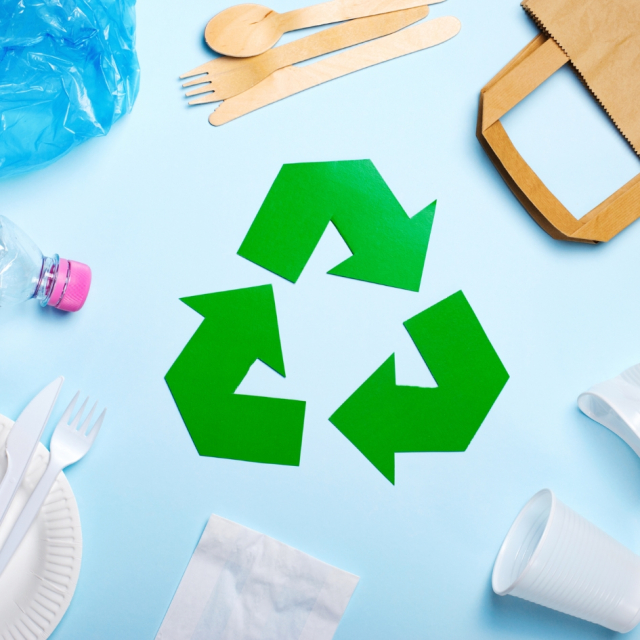Recycling is one of the most effective practices to minimize environmental impact and contribute to the sustainability of the planet. It consists of the process of collecting, processing and transforming materials that would otherwise be considered waste into new products. Although the idea of recycling is simple, its implications range from the conservation of natural resources to the reduction of greenhouse gas emissions.
This article explores the importance of recycling, its benefits, the different categories of recyclable materials, and how each person can contribute to this global cause.
What is recycling and why is it important?
Recycling is an essential tool to reduce the amount of waste that ends up in landfills and oceans. According to the United Nations (UN), more than 2.1 billion tons of solid waste are generated worldwide each year, and only a small percentage is properly recycled.
The importance of recycling lies in:
- Conservation of natural resources: Many recyclable materials, such as paper, glass, and metals, come from limited resources. By recycling, the need to extract new raw materials is reduced.
- Pollution reduction: Recycling helps reduce waste burning and pollution generated by landfills.
- Climate change mitigation: Processing recycled materials consumes less energy and emits fewer greenhouse gases than producing new materials.
- Promoting a circular economy: Promotes the continuous reuse of resources, reducing dependence on virgin raw materials.
Source: UN Environment
Benefits of recycling.
1. Positive environmental impact.
Recycling paper, plastic, glass and metals helps reduce deforestation, water pollution and greenhouse gas emissions. For example, recycling one ton of paper can save up to 17 trees and 26,500 liters of water.
2. Energy saving.
Manufacturing products from recycled materials consumes significantly less energy. According to the U.S. Environmental Protection Agency (EPA), recycling aluminum requires 95% less energy than producing it from scratch.
3. Job creation.
The recycling industry supports millions of jobs worldwide, from collecting and sorting materials to processing them into new products.
4. Waste reduction.
It helps reduce the amount of waste sent to landfills and prevents it from reaching ecosystems, especially the oceans, where plastics represent a serious threat to marine life.
Source: Environmental Protection Agency (EPA)
Recyclable materials and their processing.
1. Paper and cardboard.
Paper and cardboard are easily recyclable and represent a large proportion of household waste. For recycling, they are broken down into fibres which are then turned into new products such as office paper, newspapers or boxes.
2. Plastics.
Plastic is one of the most challenging materials due to the wide variety of types and its resistance to the biodegradation process. However, it is possible to recycle it to make bottles, furniture and textiles.
3. Metals.
Metals, such as aluminium and steel, are 100% recyclable materials. Aluminium cans, for example, can be recycled and returned to the market in just 60 days.
4. Glass.
Glass is infinitely recyclable without losing quality. It is sorted by color, crushed and melted to make new glass containers or products.
5. Electronic waste.
Electronic devices contain precious metals and other valuable materials that can be recycled. Proper management of this waste prevents toxic substances, such as mercury or lead, from polluting the environment.
Source: Greenpeace
How can we recycle correctly?
Recycling starts with proper waste separation in our homes, schools and workplaces. Here are some key tips:
- Classify materials: Identify and separate paper, glass, plastic, metals and organic waste.
- Clean materials: Before recycling, make sure containers are free of food residue or liquids.
- Avoid cross contamination: Do not mix non-recyclable materials with recyclable ones, as this can make the process more difficult.
- Check local regulations: Each region has different rules about what materials can be recycled and how they should be managed.
- Reduce and reuse: Before recycling, consider whether a material can be reused.
Source: WWF
Recycling challenges.
Although recycling has multiple benefits, it faces significant challenges:
- Lack of education: Many people do not know which materials are recyclable and how to classify them correctly.
- Insufficient infrastructure: In some countries, the lack of recycling centres makes access to this practice difficult.
- Waste pollution: When recyclable materials are mixed with garbage, their ability to be processed is reduced.
- Associated costs: In certain cases, recycling can be more expensive than the production of new materials, which discourages its implementation on a large scale.
Source: Ecoembes
Recycling in a globalized world.
In a world where mass production and consumption are the norm, recycling is a fundamental tool to mitigate environmental impact. However, it requires the joint commitment of governments, companies and citizens.
Countries such as Sweden and Germany have implemented advanced waste management systems that have achieved recycling rates of over 90%. These nations serve as models for the rest of the world, demonstrating that a systematic and educational approach can transform consumption and waste habits.
Recycling is not just an individual action, but an essential pillar for global sustainability. Every material that is recycled contributes to conserving resources, reducing pollution and promoting a circular economy that benefits both people and the planet.
However, to maximise the impact of recycling, existing challenges need to be overcome through education, investment in infrastructure and political and social commitment. Only through collective effort can we build a future where recycling is the norm and not the exception.
As citizens, we have the power to make a difference, starting with simple practices such as properly sorting waste and promoting a recycling culture in our communities.
Sources consulted:
